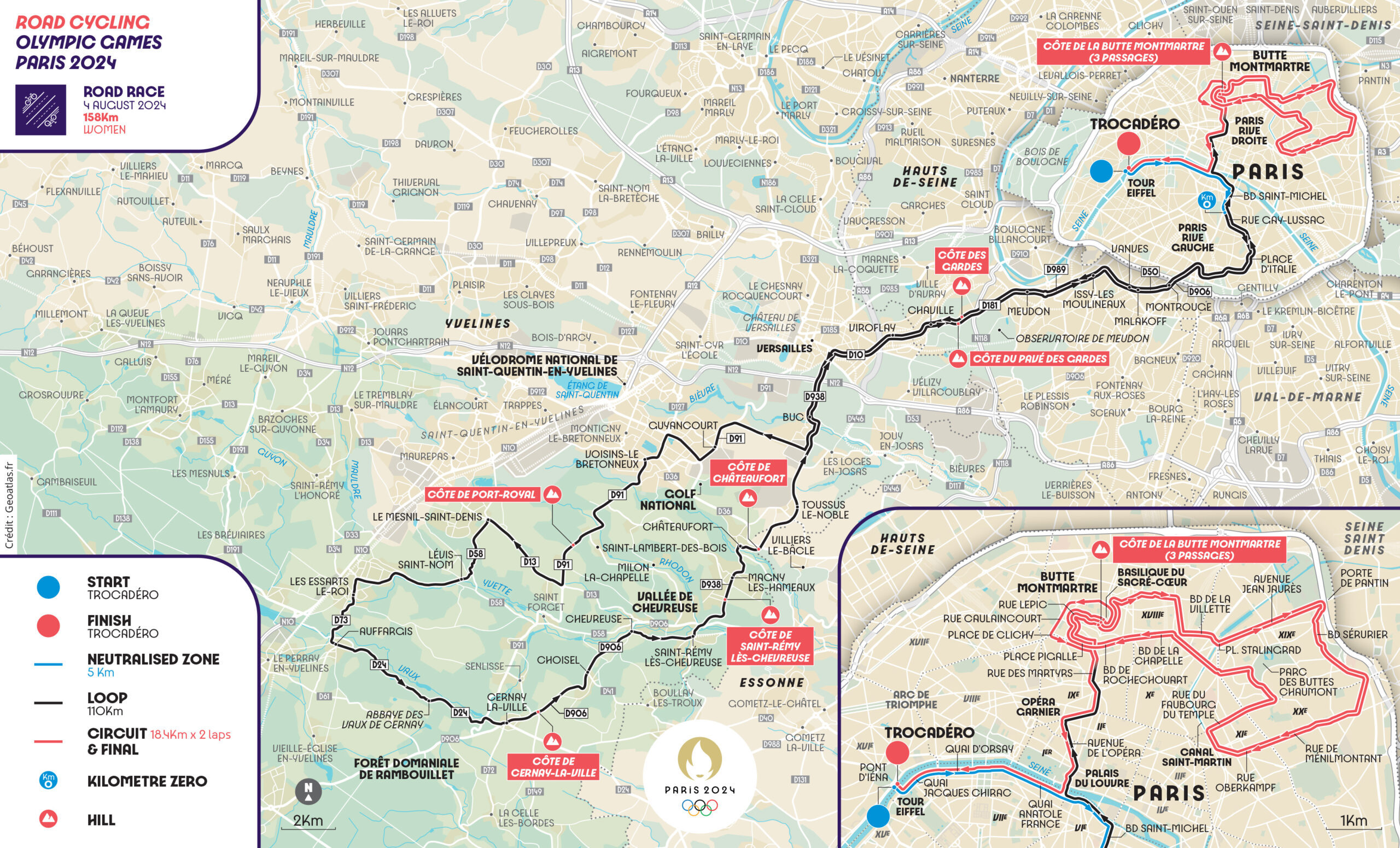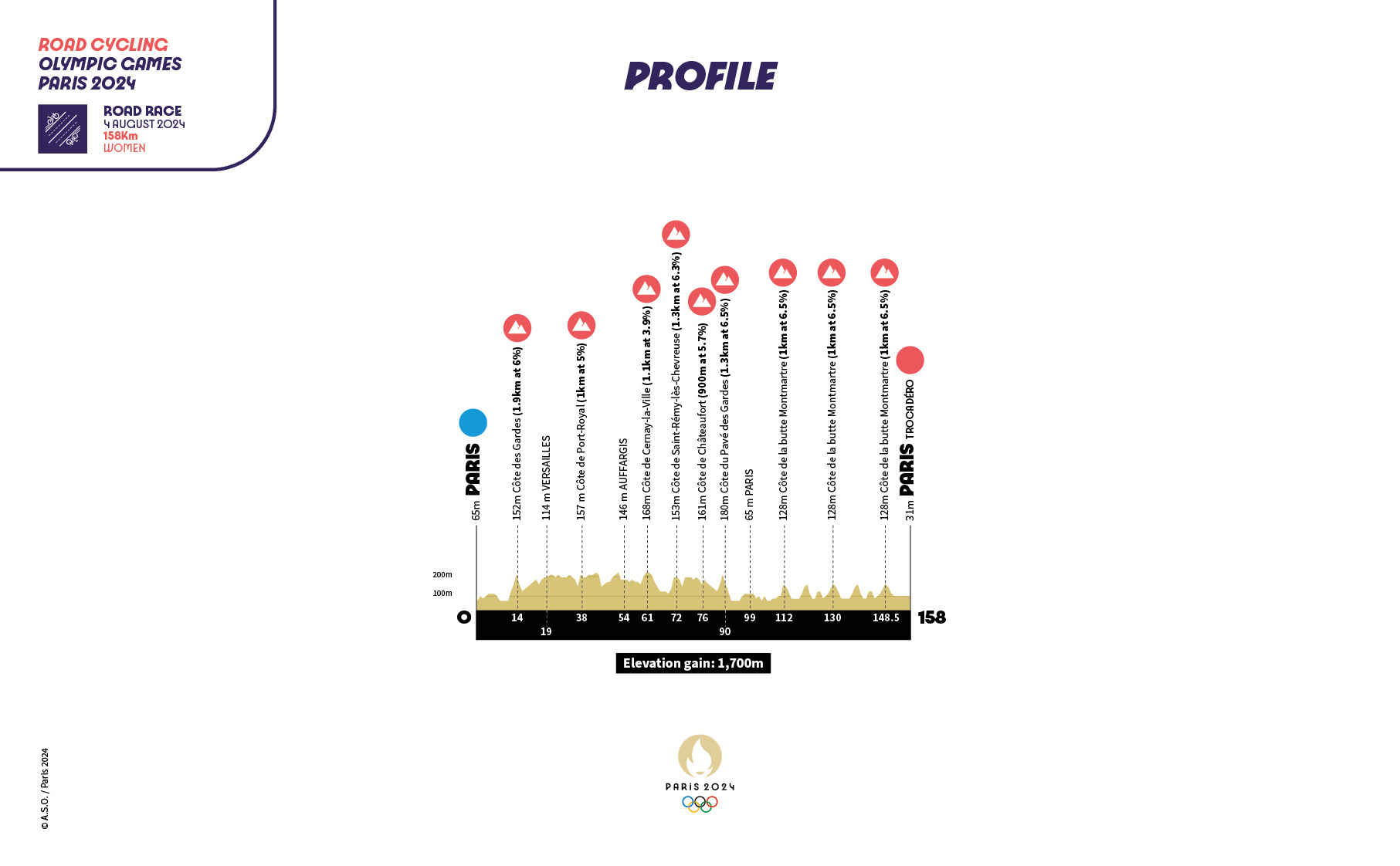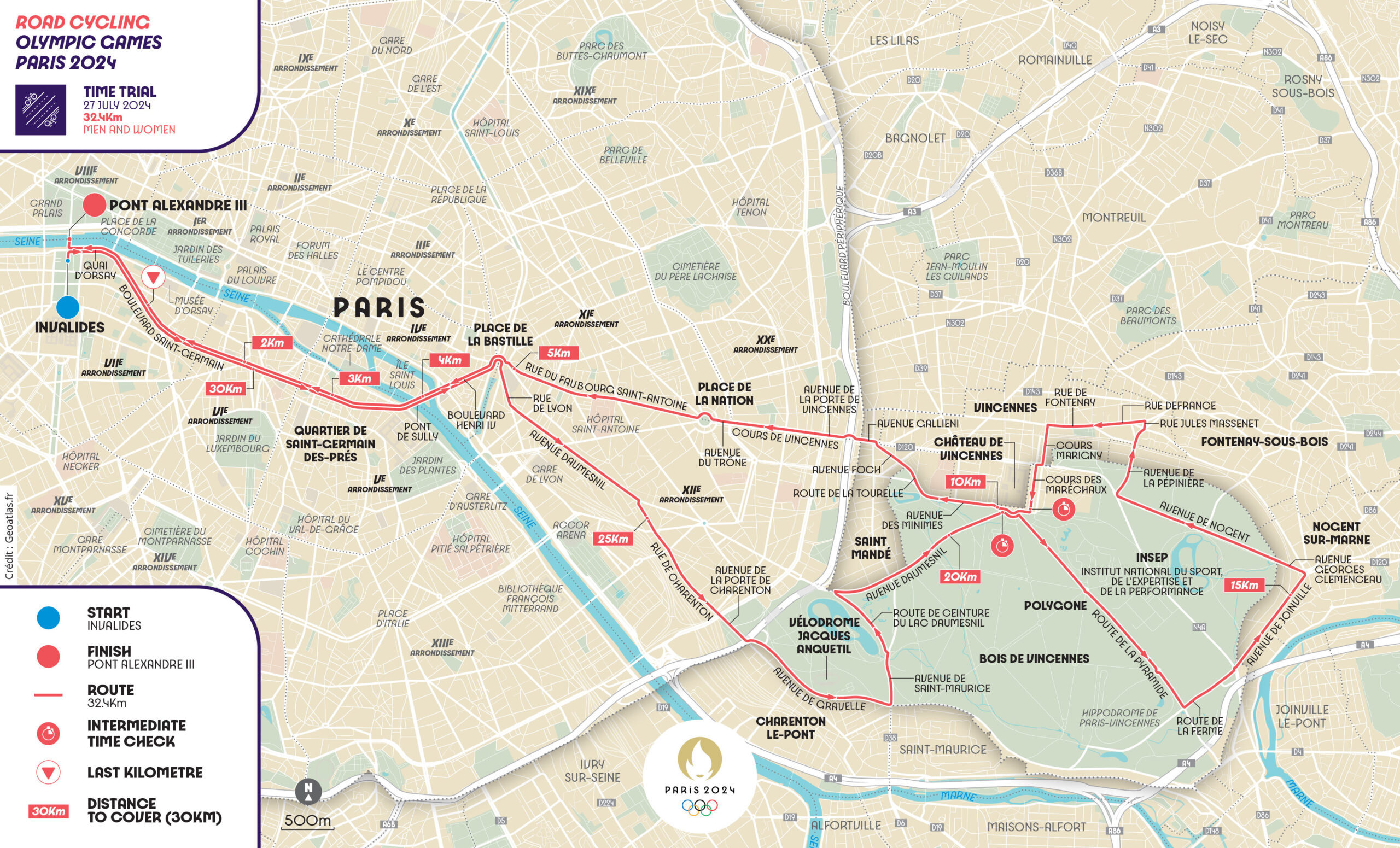Paris 2024 Olympic road race and time trial courses
Both the women and men will tackle a final route around Montmartre in their road races


The Paris 2024 Olympic Games road races and time trials start and finish in the heart of the famous city.
The day after the opening ceremony, on the 27 July, the men's and women's time trials take place on a 32.4km route into Paris, before the road races take place the next weekend, the men's on the 4 August and the women's on the 3 August.
The road races are lumpy affairs without being suited to the pure climbers, as the Tokyo course was three years ago. Instead, this is more on for the puncheurs, those that rise to the top at the Tour of Flanders and Liège-Bastogne-Liège.
The favourites, then, will be the likes of Lotte Kopecky (Belgium), Elisa Longo Borghini (Italy), Mathieu van der Poel (Netherlands), and Wout van Aert (Belgium).
The men's road race is 273km long with 2,800 metres of climbing, while the women's is 158 kilometres long with 1,700 metres of climbing. Both time trials take place over a 32.4km route which barely takes in any climbing.
Cycling Weekly will have a reporter on the ground in Paris throughout the Games, with our dedicated news team brining you reports from every road and track cycling event. Want to watch along at home? Here's how to watch the cycling at the Paris Olympics, and an outline of the Paris Olympics cycling schedule.
Men's road race

The men's road race covers 237km

The profile of the Paris Olympics men's road race course is punchy, with short sharp climbs
The 237km-long men's road race sees 13 categorised climbs adding up to 2,800m of climbing; this means slightly less distance covered, but with a bit more altitude added in. It is not a flat day, but neither is it a climber's course.
The latest race content, interviews, features, reviews and expert buying guides, direct to your inbox!
The men's peloton is just 90 riders strong, with teams having a maximum of four each, so it will be a lot less tactical that trade team racing, and more of a race of feel and strength.
The race essentially takes in three loops, two giant ones to the west of the city, before returning into the centre for a circuit around Montmartre.
The key climbs include the 1.9km Côte des Gardes (6%), the Côte de Saint-Germain En-Laye (1.1km at 5.5%), the Côte des Mesnuls (1.1km at 6.1%), the Côte de Saint-Rémy-lès-Chevreuse (1.3km at 6.3%), and the Côte de Bièvres (1.2km at 6.5%). The Côte du Pavé des Gardes is tackled in the opposite direction with 68km to go, which is 1.3km at 6.5%, but with ramps up to 9%.
The finish is flat, but it follows three times of the 18.4km finishing circuit, taking on the Côte de la Butte Montmartre (1km at 6.5%), the last with just 9.5km remaining before the medals are decided.
Women's road race

The route for the Paris Olympics women's road race is 158km long

The women's road race covers some punchy climbs but none are long and sustained
The women's road race, at 158km long with 1,700m of climbing, again is slightly shorter than the Tour of Flanders, but with quite a bit more climbing. There are nine categorised climbs, according to the organisers.
It's much the same as the men's route, just with one of the giant loops cut off, and takes in the same Montmartre circuit at the finish.
The key climbs are the Côte des Gardes (1.9km at 6%) and the Côte de Port-Royal (1km at 5.5%), followed by the Côte de Saint-Rémy-lès-Chevreuse (1.3km at 6.3%).
The Montmartre circuit with the Côte de la Butte Montmartre (1km at 6.5%) is tackled twice before a flat finish.
Time trials

The course for the Paris 2024 Olympic time trial is 32.4km long and pan flat

A flat route with a 5km finish straight
The men's and women's time trials both use exactly the same 32.4km route, which barely takes in any climbing. It is a course for the pure rouleurs, the likes of Ellen van Dijk (Netherlands) and Josh Tarling (GB).
They begin and finish in central Paris, by Invalides. The course heads east to the Bois de Vincennes, with the tightest corners near the Vélodrome Jacques Anquetil, before an incredibly straight final 5km. Power will win out.

Adam is Cycling Weekly’s news editor – his greatest love is road racing but as long as he is cycling, he's happy. Before joining CW in 2021 he spent two years writing for Procycling. He's usually out and about on the roads of Bristol and its surrounds.
Before cycling took over his professional life, he covered ecclesiastical matters at the world’s largest Anglican newspaper and politics at Business Insider. Don't ask how that is related to riding bikes.